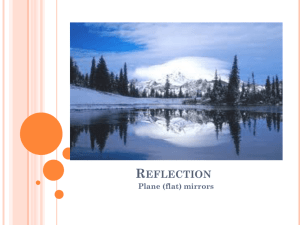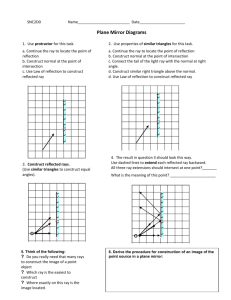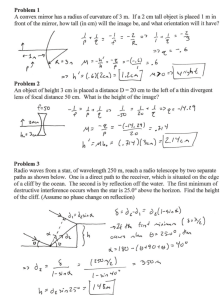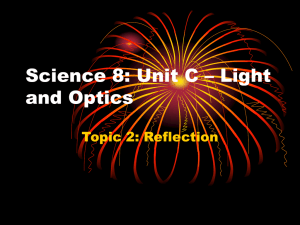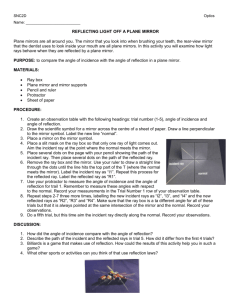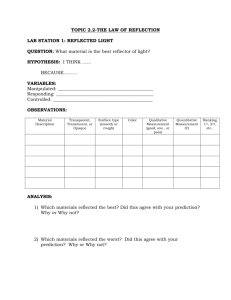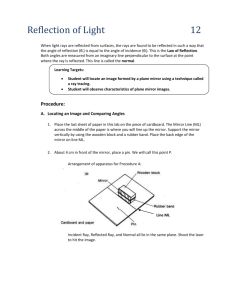reflection objectives
advertisement
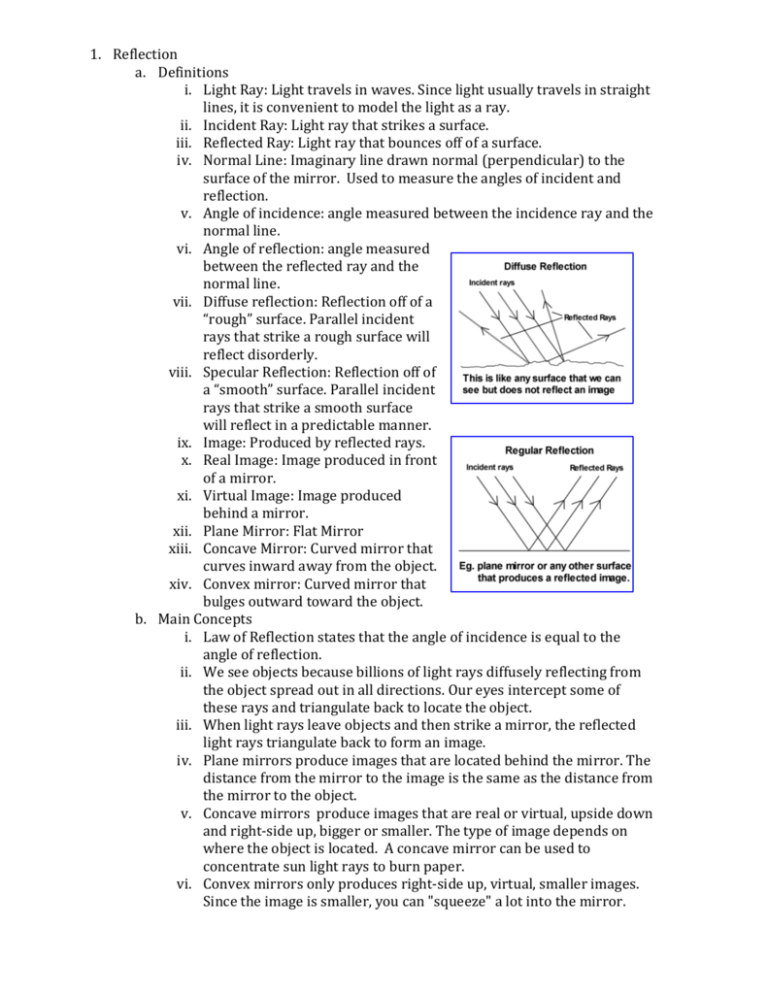
1. Reflection a. Definitions i. Light Ray: Light travels in waves. Since light usually travels in straight lines, it is convenient to model the light as a ray. ii. Incident Ray: Light ray that strikes a surface. iii. Reflected Ray: Light ray that bounces off of a surface. iv. Normal Line: Imaginary line drawn normal (perpendicular) to the surface of the mirror. Used to measure the angles of incident and reflection. v. Angle of incidence: angle measured between the incidence ray and the normal line. vi. Angle of reflection: angle measured between the reflected ray and the normal line. vii. Diffuse reflection: Reflection off of a “rough” surface. Parallel incident rays that strike a rough surface will reflect disorderly. viii. Specular Reflection: Reflection off of a “smooth” surface. Parallel incident rays that strike a smooth surface will reflect in a predictable manner. ix. Image: Produced by reflected rays. x. Real Image: Image produced in front of a mirror. xi. Virtual Image: Image produced behind a mirror. xii. Plane Mirror: Flat Mirror xiii. Concave Mirror: Curved mirror that curves inward away from the object. xiv. Convex mirror: Curved mirror that bulges outward toward the object. b. Main Concepts i. Law of Reflection states that the angle of incidence is equal to the angle of reflection. ii. We see objects because billions of light rays diffusely reflecting from the object spread out in all directions. Our eyes intercept some of these rays and triangulate back to locate the object. iii. When light rays leave objects and then strike a mirror, the reflected light rays triangulate back to form an image. iv. Plane mirrors produce images that are located behind the mirror. The distance from the mirror to the image is the same as the distance from the mirror to the object. v. Concave mirrors produce images that are real or virtual, upside down and right-side up, bigger or smaller. The type of image depends on where the object is located. A concave mirror can be used to concentrate sun light rays to burn paper. vi. Convex mirrors only produces right-side up, virtual, smaller images. Since the image is smaller, you can "squeeze" a lot into the mirror.
